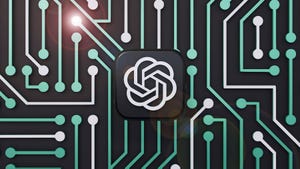Industry Perspectives: Kotura, StillSecure, Hurricane Electric
The Industry Perspectives channel at Data Center Knowledge highlights thought leadership in the data center arena, providing industry professionals with the opportunity to share their insight and expertise. This week's authors covered cloud security, data center energy efficiency and the transition to IPv6 in the data center.
September 25, 2011
The Industry Perspectives channel at Data Center Knowledge highlights thought leadership in the data center arena, providing industry professionals with the opportunity to share their insight and expertise. Here's a recap of this week's Perspectives:
Green Photonics for Energy Efficient Data Centers - Arlon Martin of Kotura writes about how optics can save energy in the data center world. Altogether, data centers are estimated to consume a phenomenal 3 percent of the entire power in the U.S. They consume 100 billion kWh at an estimated cost of $7.4B/year. Because they consume so much energy, data center architects are looking at every way possible to reduce power consumption. Meanwhile, the demand on data centers continues to grow at an amazing pace.
Tenant-based Cloud Security: Not a Contradiction - Rajat Bhargava, founder, chairman & CEO of StillSecure, takes look at what is becoming a much larger concern for data center managers and cloud providers looking to provide a range of services in the cloud – security. In the public cloud, infrastructure providers selling compute and storage infrastructure are keenly aware that their operations must be secured. These IaaS providers spend a great deal of time ensuring that security has been embedded into their platform.
IPv6 Adoption in the Data Center
Owen DeLong, IPv6 evangelist at Hurricane Electric, writes about the transition to the new protocol. IPv6’s nearly infinite supply of addresses (340 undecillion) could accommodate an intergalactic deployment of connected devices, but of equal importance is IPv6’s ability to improve routing efficiency, reduce router processing, enable true peer-to-peer connectivity, and eliminate complex layers of indirection like NAT.
About the Author
You May Also Like


.jpg?width=300&auto=webp&quality=80&disable=upscale)




